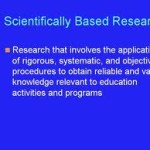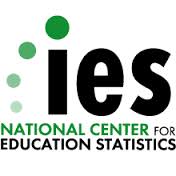Education Research & Analysis
Anyone who examines this website will see right away that i.pel’s primary focus in education is research. Research and analysis in education, like most fields, is the backbone of the industry. i-pel provides quality research, analysis & implementation services for several key area of K-12 education. For example, research and analysis on best practices in curriculum, instruction, professional development, program marketing, and student recruitment is applied to improve schools project implementation, management, and sustainability. i-pel’s research and analysis programs are conducted through the lense of Innovationism which is an education philosophy that guides the development K-12 applications through the balance of the objective and subjective element found in all education phenomenon.
The Every Student Succeeds Act (like the No Child Left Behind Act before it) requires any state, district or school looking to obtain a development grant include in its RFP response applications in-depth, verifiable content research. i-pel works with practitioners to provide formative evidence that embraces multiple learning modalities to provide a deeper, richer definition of student success. This research helps to develop and validate new measurement tools that focus on student learning more so than on teacher practice. Some topic example of the grant research we do to advance the collective understanding and development of a greater set of proof points of promising practice at different levels of the system include:
- Assessing Deeper Learning Outcomes
- Moving Toward Learning Progressions
- Building Assessment Literacy through Professional Learning
- Applying a Broader Definition of Personal Success Skills
- Implementation of Digital Tools Leveraged to Inform Instruction
SBR
ESSA requires that schools use federal money only on products and services that have an established research base through “Scientifically Based Research” (SBR). SBR is, in essence, a randomized trial similar to the clinical trials required for pharmaceuticals. In an effort to avoid poor quality evaluations, ESSA designates any type of research that does not meet SBR requirements as being of poor quality.
Any developer of education programs and products needs to understand the complexity and limitations of SBR in order to comply with its requirements. Although costly and time-consuming, as ESSA now stands, SBR is required on all new products. i.pel will be using an iterative, multimodal approach to product analysis and evaluation as it is effective in gathering sufficient information about efficacy to guide the design and evolution of a particular education product.
Implementation
Development research and analysis conforms to the Title IID mandate, “To encourage the effective integration of technology resources and systems with teacher training and curriculum development to establish research-based instructional methods that can be widely implemented as best practices by State and local educational agencies.”
Certifications
Because of the questions about the educational value of many existing educational products such as educational video games, i.pel, as an independent third party, provides evaluation certification as to the educational effectiveness of such products.
Compliance
During the duration of grant implementation i-pel will analyze how effective the initial supporting research has benefited the project. This analysis will be useful not only to grantee but also the grantor for feedback as to the soundness of the initial decision to authorize the grant. Added to this analysis will be any new research information that may have materialized during the duration of grant development and implementation.
IES Conformity
All i-pel research and analysis projects conform to the research guidelines of The Institute of Education Sciences (IES), the statistics, research, and evaluation arm of the U.S. Department of Education. They are an independent and non-partisan purveyor of scientific evidence on which to ground education practice and policy and share this information in formats that are useful and accessible to educators, parents, policymakers, researchers, and the public.
IES primary focus is to realize the full potential of their education research and development investments – including obtaining meaningful findings and actionable results – through a systematic development of knowledge. Research categories include those that generate the most fundamental understandings related to education and learning; examinations of associations between variables; iterative design and testing of strategies or interventions; and assessments of the impact of a fully-developed intervention on an education outcome. Each research category describes the purpose and the expected empirical and/or theoretical justifications, types of project outcomes, and quality of evidence. IES:
- Collects data that describes how well the United States is educating its students
- Conducts surveys and sponsor research projects to understand where education needs improvement and how these improvements might be made
- Funds development and the testing of new approaches for improving student education outcomes
- Conducts large-scale evaluations of federal education programs and policies
- Provides resources to increase data use and research in education decision making
- Supports advancement of statistics and research through specialized training and the development of methods and measures
NCES Education Researcher Mandate
Department of Education’s National Center for Education Statistics seeks to dramatically improve college readiness and completion in the United States, maximizing student learning and closing achievement gaps, through the development of new, transformational learning and operating models and through the strongly integrated use of technology. They encourage researchers to continue to work with practitioners to provide formative evidence that embraces multiple learning modalities and a deeper, richer definition of student success. They need the help of the research community to develop and validate new measurement tools that focus on student learning, rather than on teacher practice.
Education researchers (whether in government, universities, or schools) are in the high-demand end of the information-use spectrum. Their collective need for data is great and, accordingly, the benefits of providing the data must be weighed against the cost. This is a difficult choice to make because the benefits of research are unknown until the research has been done. Fortunately, a comprehensive, well-designed information system – one with data that are valid, reliable, and timely and that provides access to data in a format that researchers can use – can serve both specialized constituencies and the broader public.
Allison, G. S. (2015). Financial Accounting for Local and State School Systems: 2014 Edition (NCES 2015-347). U.S. Department of Education, National Center for Education Statistics. Washington, DC: U.S. Government Printing Office. https://nces.ed.gov/pubs2015/2015347.pdf

Recent Comments